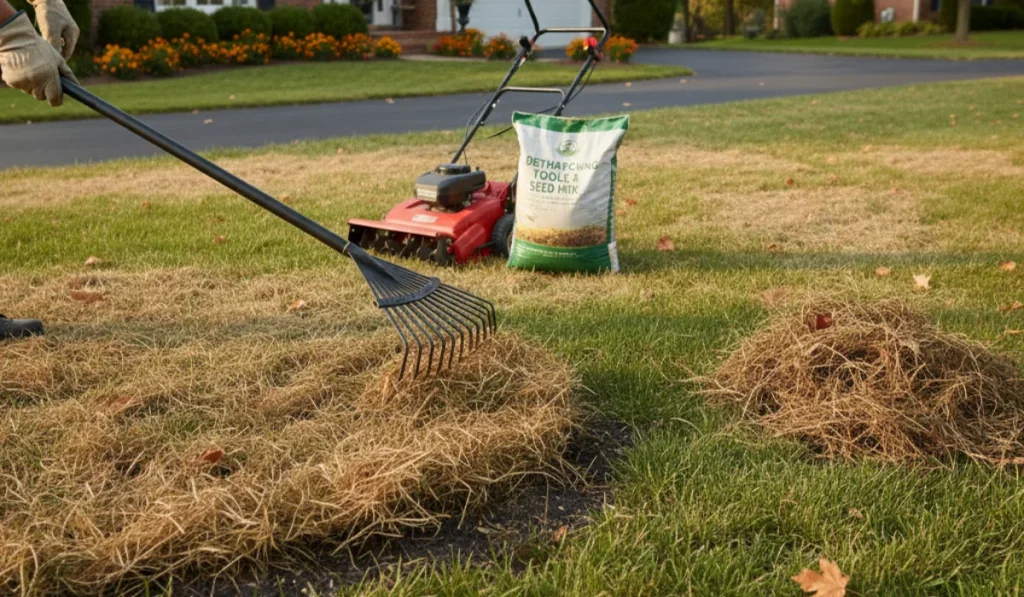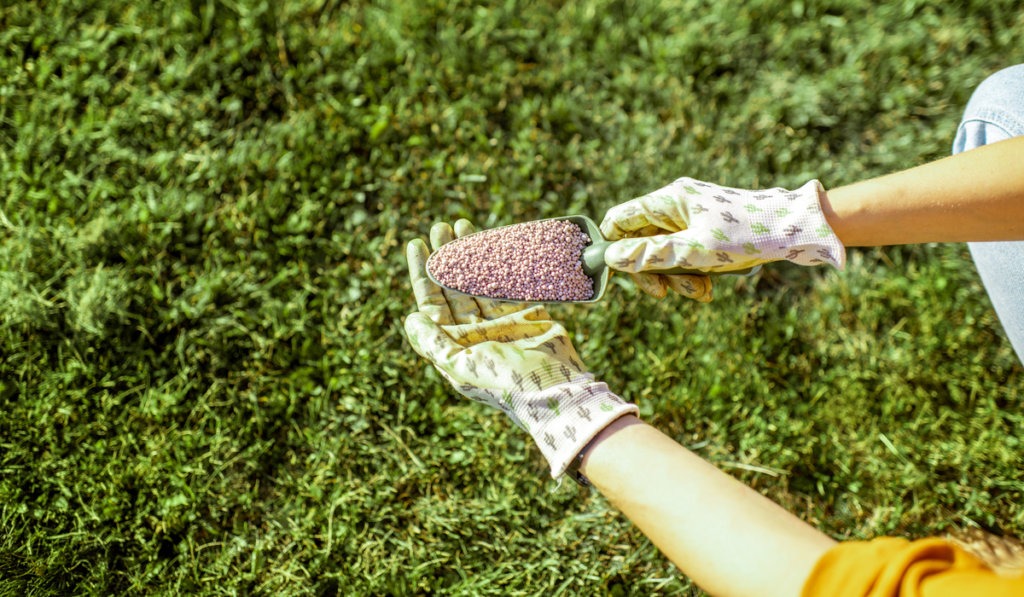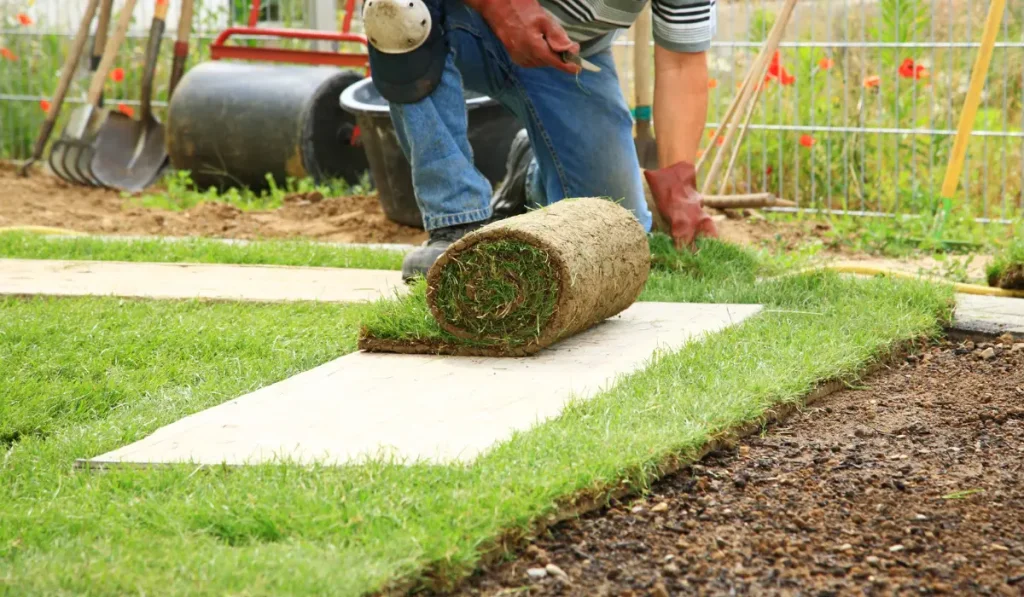In a state as diverse as California, picking the right sod for your yard takes more than just choosing what looks nice. Your lawn grass needs to match your local microclimate. And with so many sod and grass seed choices out there, finding the best lawn starts with understanding how each turf type handles local conditions.
This guide will help you select the ideal grass for your area, one that suits your lifestyle, local weather conditions, and water usage, ensuring your lawn remains green year-round.
Key Takeaways
- Northern California lawns thrive with cool-season grass, while Southern California requires heat-tolerant warm-season types.
- Lawns with full sun need Bermuda or zoysia, while shaded spots work better with fescue or St. Augustine.
- Yards with high foot traffic require tougher grass, while decorative lawns can utilize low-maintenance ground covers.
- Deep-rooted grass saves water and mowing time, whereas cheaper sod often requires more maintenance in the long run.
Understand Your Region’s Microclimate
Northern California and coastal cities usually lean toward cool-season grasses like tall fescue and Kentucky bluegrass. These types of turfgrass are known for their cold tolerance, which allows them to maintain their green color longer into the winter months.
You’ll also find that perennial ryegrass is a solid choice for cooler, wetter climates and is commonly included in the best grass seed blends.
If you’re further south, say in Los Angeles or other parts of Southern California, you’ll want warm-season grasses like Bermuda grass, St. Augustine grass, or zoysia grass.
These varieties are better suited to handle hot summers and drought conditions, making them ideal for water-conscious landscaping in sun-drenched areas.
Match the Sod Type to Your Sun and Shade Balance
Sun exposure affects more than just color. It impacts growth and durability.
Bermuda and Zoysia perform best in full sun. While some zoysia varieties can tolerate partial shade, they generally prefer ample sunlight and are ideal for high-traffic areas, such as backyards, sports fields, and golf courses. Their thick turf and heat tolerance make them a practical choice for homes in Southern California.
If you’re working with partial or dappled sunlight, consider a type of grass with better shade tolerance. Fine fescue, fescue grass blends, and St. Augustine are popular choices for homeowners with trees or tall structures nearby.
Even in limited light, these sod options help you maintain a healthy, durable lawn.
Evaluate Your Foot Traffic and Usage Needs
Consider how you utilize your lawn.
- Is it for entertainment?
- Pets?
- Kids?
High-traffic lawns call for more durable sod. TifTuf Bermuda and turf-type tall fescue are built for wear and tear. Their root systems grow deep, helping them recover quickly from foot traffic and heavy use.
For a new lawn, you want to stay green year-round, and overseeding is a smart strategy.
Many homeowners in warm regions overseed with ryegrass or perennial ryegrass during the winter months. It provides a boost in color while the warm-season base goes into dormancy.
If your yard is mostly decorative, ground cover varieties or low-maintenance grasses like buffalo grass can be a better fit. They use less water, require less mowing, and hold their color well in dry conditions.
Consider Maintenance Habits and Mowing Preferences
Every homeowner’s lawn care routine is different.
If you enjoy the look of a well-kept lawn but don’t want the workload, low-maintenance options like buffalo grass or fine fescue offer excellent results with less mowing and irrigation. These types also resist common issues like weeds and pests, reducing your need for constant weed control.
Bentgrass and Kentucky bluegrass, on the other hand, are often selected for their dark green or blue-green aesthetics. However, they do require more attention, including more mowing, fertilizing, and watering, especially during hot summers.
To maintain sustainability and cost-effectiveness, select a drought-resistant turf type that aligns with your commitment level and water availability.
Think Long-Term: Water and Sustainability
Choosing the right grass isn’t just about what grows. It’s also about what survives.
In many parts of California, where water restrictions are common, homeowners are opting for grasses that need less water and recover well after heat stress.
TifTuf Bermuda, zoysia, and tall fescue all rank high in terms of drought tolerance.
Their deep root systems and disease resistance make them long-term players for your lawn, especially if you’re trying to maintain color without frequent watering.
The best grass seed or sod isn’t always the cheapest per square foot, but it’s often the one that needs less water and care over time.
Frequently Asked Questions
How long should I wait before walking on newly installed sod?
Wait time: At least 2 to 3 weeks.
Walking on new sod too soon can stop the roots from taking hold. It can also create uneven spots and slow down the rate at which your lawn roots.
Do I need to test my soil before laying sod?
Yes, testing is a good idea, but not mandatory.
It helps you learn about your soil’s pH and its nutrient levels. That way, you can select the right fertilizer and address any issues before the sod is installed.
What tools do I need to install sod myself?
Basic tools:
• Sod cutter
• Rake
• Lawn roller
• Utility knife
• Hose with a sprinkler
These help you remove old grass, level the soil, cut the sod, and water it evenly.



